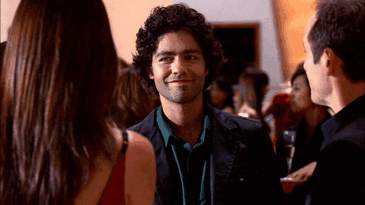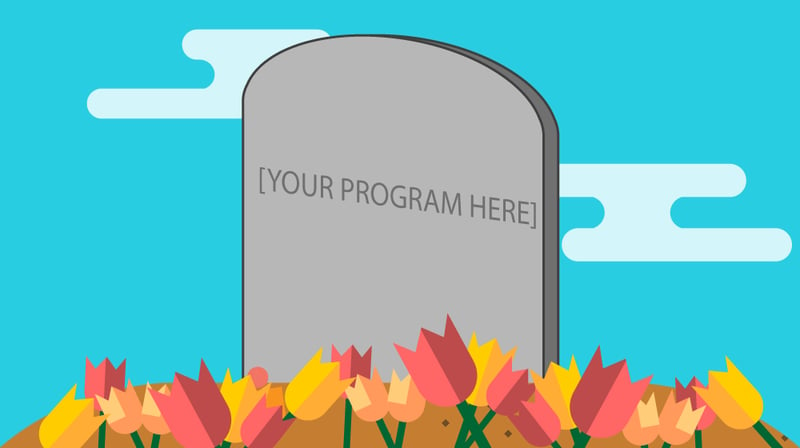You’re feeling good about the late night event that ended on campus. Students are leaving, everyone is smiling and waving goodbye.
From planning the event a few months ago, to advertising and promoting the event, it’s finally done!
We’re going to burst your bubble: you’re not done quite yet.
We’ve already gone over how you can optimize the beginning of an event to attract more students. Here we explain why maintaining relationships with students post event is just as important as the attracting them to the event and providing engageable moments while they’re there.

The focus is often on the promotion of the event and the event itself, while communication after the event is non-existent. As part of an event life-cycle, following up after an event helps to build student loyalty.
When used in the right way, these tips can provide a more meaningful post-event experience for your students and make them feel valued:
1. Implementing a Blog Reflection Series
Self-reflection is important to understand our own development as humans and particularly for college students. Encouraging students to engage in the process of critical self-reflection allows their peers to interpret the event from a new perspective.
Student development theorist Baxter Magolda (1999) suggests that we make meaning out of our own frame of reference or previous experiences and our understanding of those experiences. We understand our new experiences based on our understanding of previous experiences and those influence how we understand ourselves, how we relate to others, and how we make meaning of new experiences in our work and life.
Sharing student reflections is one of the most meaningful ways to engage students. Many students who attend an event have some sort of personal connection and that’s why they decide to go in the first place. Talk to your team after an event and ask if they know any students who are a great fit to share their experience (as an attendee, student leader, etc.), if the main event was the speaker, ask for a reflection post – like this reflective blog post by SA Pro Kristen Perry.
After all, the best kind of learning is the kind that doesn’t feel like a lesson.
We found a post by student leader Alex Hu from the University of Connecticut’s Thought Leadership blog who reflects on his experience as a first-year student,
“I can still remember when I first moved into my dorm after a sixteen-hour flight with two huge suitcases. A real-life, living American greeted me and told me if I ever need any help he would always be there for me. So I thought, ‘wow, thank you America, people here are so friendly!’ This American’s name is Ali Etman, my freshmen year RA who became my mentor-for-life. Since then, making friends has always been that easy. In the LLC, we have an open-door practice where everyone leaves their doors open whenever they are free to talk.”
Alex discusses his own experience as a first-year international student which may provide comfort to prospective or current international students attending the University in the upcoming semester. Not only does it help international students navigate their first few days in a residence hall, but it allows Alex to reflect on his own development in college.
Magolda argues that self-authorship is the basis for creating advanced learning outcomes in college in order to effectively prepare students for life after college. Student affairs professionals can encourage the importance of strengthening their inner voice through critical self-reflection.
2. Optimizing Shareable Pictures & Videos
One of the best ways to remember an event or moment in time is through photographs. Photo and video popularity are at an all-time high right now, thanks to networks like Instagram and Snapchat. Take advantage of the obsession students have right now to further engagement.
This past February, Snapchat rolled out on-demand geofilters. Geofilters are an in-app illustration which temporarily appear in the application via a smartphone device. On-demand geofilters can be used for a one-time event for an hour or six hours. Perfect for Orientation, Welcome Week, Move-In Day, or any one-time event starting at $5. The average turnaround for a submission is about a day.
This is a location-based geofilter which can have a similar illustration to that of an event-based geofilter. Here’s an example of a Snapchat illustration with our Senior Software Developer, Jesse:

A great follow up to creating an on-demand geofilter is providing free printing for the students who decide to save their picture. A simple tweet like, “Tweet us your Snapchat photo with the hashtag #RUseniorball & we’ll print it for free!” Another option is having students drop-in to an office and print off their pictures for free the next day (advertised pre/during/post event on appropriate social media platforms). This gives you or program organizer to gain feedback on the event and continue a meaningful conversation.
Snapchat pictures typically stay on a user’s story for 24 hours, unless they decide to remove it, it’s a great way to create free marketing during your event and a memory to share for students!
Tips for Social Media Engagement
Use a hashtag that incorporates the #latergram hashtag. Many students don’t have the time to go in and immediately filter a photograph, tag their friends, and create a clever caption. Provide ample opportunities for students to photograph each other throughout the event and ask them to use the event’s Twitter hashtag (#) ? .
Take down notable insights and quotes from speakers throughout an event. Create quote images that you can continue to share on your social media channels in the days and weeks after the event. Quotes are known for a high engagement rate on social media (likes, favorites, double taps, and shares) ??
During an event, sometimes questions go unanswered from students and hot topics come up during a Q&A. After the event is over, write down all content that seemed popular among students. Use these ideas to inspire new programming that will reach an existing and new student audience with the hopes of capturing students both online and offline at your next event ?
3. Revamping Emails
You have to be careful with these. Students still read emails from colleges and universities, if they’re communicated in the right way.
Where texting may be helpful to convey an urgent message to college students during an emergency, students are still opening emails and checking social media updates to get information. It’s best not to send an email blast from an activities office, but personalize each email to their name with a nice “thank you” from an actual person. With Presence you can send an e-mail to only those students who attended an event. You will feel more confident your message will get to students when you click the send button ?

Keep headlines short and simple. You want a headline that will capture a student’s attention in the few seconds to make a first impression.
Utilize the power of teasers. Don’t give the punchline away at the start and push students to open the e-mail to find out what’s next:
“TGIF! ? “
Some students best respond to direct instructions. If your email has a call-to-action, let the subject of the email reflect that:
“Join us next time at the Cake Off ? ”
If you have something to announce in your email, channel your enthusiasm through the subject line. Students are curious and want to be the first to know everything. Announcing a contest via email will encourage them to read the email:
“The winners of the Instagram contest were…”
Platforms like MailChimp are helpful in monitoring open and engagement rates among students when sending email. Identify which types of headlines receive more open rates and engage students. Learn more about why emoji’s are appealing to college students.
Most folks think “let’s send a survey!” after an event when there are more options to assess whether a program has been successful.
If you decide to include a survey, don’t ask more than 5 questions to obtain feedback. Presence offers great forms that can be embedded into emails if you choose to obtain feedback in that medium!
Check out our blog post highlighting the top ways to Communicate with College Students to improve your event and engagement strategy even more!
4. Providing Involvement Opportunities
Following the event, immediately connect students with in-person opportunities. One of the best ways to engage meaningfully with students is both online and providing face-to-face conversations.
Outside of the event, provide space where students can meet representatives from local community organizations, introduce students to thought leaders and campus mentors, and connect them with student organizations associated with the topic of the event to continue dialogue.

Create a newsletter with Mailchimp to send out a newsletter tailored to student interests. With Mailchimp tags, students can choose tags based on their interests so they’re only receiving information they want to read.
A number of institutions are now marketing personalized experiences for incoming students. Assembling newsletters in emails towards specific interests via tags helps to get the information in front of the right group of students.
Your Thoughts!
Include all of these strategies or mix a few of them to help heighten awareness of future events and create a relationship with students. Keep your students engaged post event, and keep them coming back!
To learn more about optimizing student engagement and involvement, get in touch with the experts at Modern Campus Presence for a free demo! We’ve got you covered.
Have unique post-event engagement strategies? Tweet us @mc_sapro and share your ideas!
References
Baxter Magolda, M. (1999). Creating contexts for learning and selfauthorship: Constructivedevelopment pedagogy. Nashville: Vanderbilt University Press.
Evans, N. J., Forney, D. S., Guido, F., Patton, L.D., & Renn, K.A. (2010). Student development in college: Theory, research, and practice. 2nd Edition. San Francisco: Jossey-Bass.





